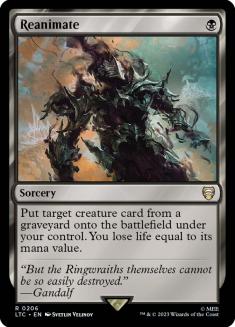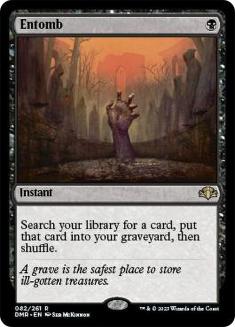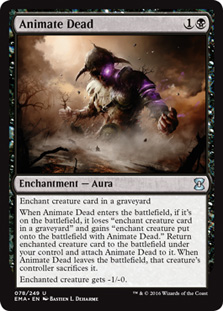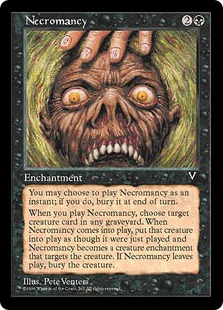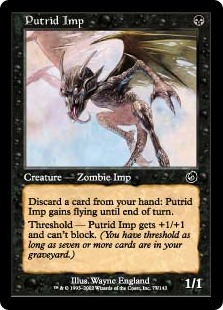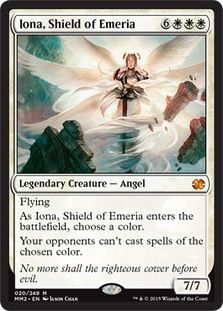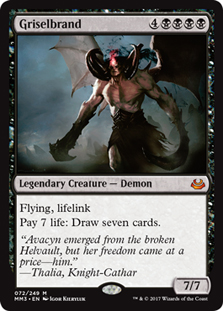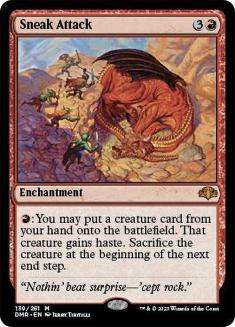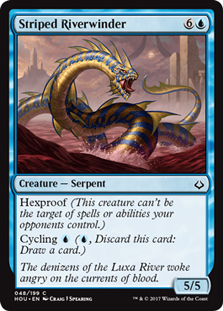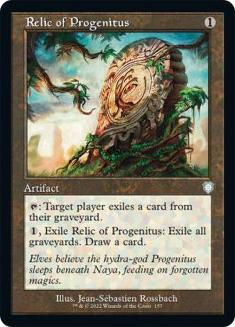Hello, and welcome to a new style of article that I’m taking for a test run. The well is really deep on this, so I hope that you like it! On The 540, we used to do some episodes that we called “Deep Dives,” where we would take some concept about Cube and start from its base definition and build towards an expert understanding of the concept. We covered a variety of things with these episodes and I might tackle a wider range of topics in these articles over time, but for now my focus is on deck archetypes. Today I’ll be going over Reanimator as an archetype, but first I’d like to break down what you can expect from this style of article.
What Is a Deep Dive?
My Deep Dive articles are intended to offer a better understanding of a particular concept from the perspective of both a Cube drafter and a designer. For today’s purpose and for my current future intentions, these concepts will be deck archetypes.
First, I’ll define that concept. For archetypes, this definition will include a categorization as aggro, combo, and/or control, as well as some notes on the specific goals of that archetype. I’ll then break down how to approach drafting that archetype, followed by some subjective analysis on how fun that archetype is to play with and against. After that, I’ll close with notes on how to support that archetype as a Cube designer, leaving you to consider the extent to which the juice is worth the squeeze.
It feels fitting to start with Reanimator with Halloween approaching, and it’s such a well-known archetype that it was something that I always considered inevitable to discuss on The 540. Alas.
What Is Reanimator?
Reanimator is primarily a combo archetype, deriving its name from the card Reanimate. The whole idea is that you get a big scary creature into the graveyard, and then you bring it back with a cheap spell, getting a significant discount and ideally riding that creature to victory. The best versions of Reanimator are either extremely efficient and consistent at executing this combo, or able to take a controlling role while they set up to win.
The most significant note I have about Reanimator is that it should feel like cheating when you’re doing it right. If you jump through too many hoops and spend too much time and mana putting a creature that gets answered onto the battlefield, then it’s pretty obvious that you would have been better off just casting spells that impact the battlefield from your hand.
The best Reanimator decks win a lot of games very easily. Worse Reanimator decks don’t typically end up playing closer games; they just start losing more games without putting up much of a fight while continuing to get easy wins when they do win. The nature of the deck makes it a bit precarious to approach as a drafter, but when things work out, you can get paid off in a big way.
How Should I Approach Drafting Reanimator?
A successful Reanimator deck has access to these three essential elements: ways to get creatures into its graveyard, creatures that are worth reanimating, and reanimation spells. As a drafter, you’ll typically be looking for the best-in-class cards in these categories to move in on the archetype initially, and then picking up whatever pieces are available in the other categories as the draft progresses.
Your mileage may vary, and this also changes if you’re more committed to forcing Reanimator generally, but in my experience it’s better to value the ways to get creatures into the graveyard and the creatures themselves higher than the reanimation effects, which are more interchangeable. Access to Entomb is night and day for a Reanimator deck, and you really want to make sure what you’re reanimating is lights out. Whether it comes back via Animate Dead or Necromancy is less significant. At lower power levels, you’re not going to see cards like Entomb, but that’s another discussion entirely, and you’ll see why I’m less concerned with that later.
Interaction and card selection are the best things to pick up when you can’t focus on any of the three main tenets of the deck. When your deck is so focused on doing something quickly and efficiently, you get a lot of mileage out of Ponder. Relevant interaction for Reanimator tends to look more like Counterspell and Thoughtseize than Doom Blade, but you do want to keep an eye out for some removal in case you run afoul of a Scavenging Ooze or Containment Priest.
Also keep in mind that card selection spells that can put creatures into your graveyard are at a premium. Jace, Vryn’s Prodigy is an awesome card for Reanimator decks. It’s a great early pick because it goes in any blue deck, and then it plays perfectly into your game of discarding threats while looking for reanimation spells. On that note, it’s difficult to have too many quality discard outlets like Jace because they’re just good cards, but a trap to avoid is drafting too many Putrid Imps and reanimation spells which do nothing on their own. With the right amount of card selection and when your deck is full of more individually powerful cards, you don’t really need more than two, maybe three reanimation spells. It’s yet another reason why I value the reanimation spells lower than the other effects in the draft.
Something that I like about Reanimator is that it tends to be base Dimir (blue/black). With a two-color focus, there’s not a huge need to pick up mana-fixing, which is good considering that you’re on the lookout for three major classes of cards while also being interested in card selection and interaction.
That said, there are incentives to go into more colors. Red offers discard outlets like Faithless Looting and powerful cards like Sneak Attack if they’re in the Cube, green offers Survival of the Fittest to go with Recurring Nightmare for the classic Rec Sur archetype, and white offers Unburial Rites as well as the ability to cast some unbeatable monsters like Elesh Norn, Grand Cenobite. For the most part, trying to stay Dimir is ideal and lets you draft the necessary pieces for your deck when they show up, but on a draft-by-draft basis, you want to be aware of the reasons to go into additional colors.
How Fun Is Reanimator?
Take everything that I say in this section with a grain of salt. You’re able to have your own experiences and make your own value judgments. I write from personal experience and from observing and caring about the perspective of many other players over the years, but there’s no accounting for taste. These are my beliefs on the relative fun of playing with and against Reanimator:
Playing with a good Reanimator deck is incredibly fun. It feels like you’re not playing the same game as your opponent and like you aced the draft portion. That aspect is what makes it worth trying to include in Cube. Playing a bad Reanimator deck, on the other hand, feels horrible. When your deck just can’t consistently set up or when your opponent can easily answer or ignore what you cheated in, there’s not always much game to be played. Reanimator is the most fun to play when your deck is broken or when your build is controlling enough to play real games outside of trying to accomplish a singular goal and hoping it’s good enough. That’s a lot of pressure to put on an archetype, but the upside is there.
Playing against Reanimator, on the other hand, is pretty consistently horrible. When you get locked out by Iona, Shield of Emeria, when you just can’t beat that Griselbrand, there’s just this powerless feeling in those games. And when your opponent just fails to go off? How fun is that? Is it satisfying to draw a Scavenging Ooze that they can’t answer? If all that you care about is winning, sure. The games just typically aren’t very good. To be clear, it doesn’t really make a difference if we’re talking about the best of the best reanimation targets or a Cube where Waker of Waves is the prize. The giant monster often either gets there or it doesn’t, with little else mattering.
Reanimator tends to exist in a way where the archetype matchup abstractly matters at least as much as the games themselves. If you’re casting Goblin Guide, you’re relying on their fail rate. If you’re playing Azorius Control, they’re probably in trouble. The games can often be a formality. In this regard, Reanimator ranks very low for me in terms of decks that are fun to play against.
How Do I Support Reanimator as a Cube Designer?
The most important aspect of supporting Reanimator as a Cube designer is including a good volume of the three essential pieces. Overlapping archetypes are also pretty important to make sure that the giant monsters aren’t just duds to most players at the table. This can be accomplished with castable threats that are worth reanimating, like Grave Titan, as well as with other methods to cheat creatures in, like Sneak Attack or Monster Manual. At lower power levels, stuff like Striped Riverwinder that can just cycle is also good at offering some cross-archetype playability. Powerful card selection and looting effects also go a long way towards making the archetype work.
Given that Reanimator tends to either do its thing or lose, you want to make sure that you’re pushing it to an extent that it’s worth trying to draft while also supporting archetypes that feel like they’re doing similarly powerful things and/or interacting. Discard and counterspells are the more fun side of ways to interact with Reanimator, with graveyard hate being the less fun way to accomplish this goal.
It’s not uncommon to see hate cards and prison pieces in other people’s designs, but it’s something that I have a strong distaste for in my Cubes. These are necessary elements of balancing large Constructed formats, but when it comes to Cube, they heighten the aspect of matchups being more relevant than games that I went over earlier. More competitive groups and higher-powered Cubes can gain from supporting Reanimator and featuring Relic of Progenitus. I just want to be clear that these environments emphasize winning more than they emphasize playing.
Given how powerful Reanimator is when it’s properly supported, it’s not going to be a value-added archetype in a lot of environments. It incentivizes some pretty specific stuff and tends to lead to matchups that feel very similar every time that you play them. Reanimator is surprisingly difficult to support in an engaging way for how often you see it.
My experience has been that it already shows up in more Cubes than can reasonably bear it, and it’s a little weird to me that it’s as popular as it is outside powered Cubes where the threshold for nonsense is very high. The biggest reason to support Reanimator is for those games where you just demolish your opponent. If you don’t value that or if you are trying to accomplish a different goal by supporting Reanimator, I’d say that you’re fighting an uphill battle. In fact, I’d go so far to say that moving away from Reanimator as a supported archetype was among the best changes in the recent Magic Online Modern Cube update.
Coming Up for Air
Firing off the hot take cannon by suggesting that Reanimator is arguably too beloved was probably an ambitious way to get this style of article going, but I wouldn’t have it any other way. If you think my assessment of Reanimator is in any way unfair, I’m not sorry. If you enjoyed this article (or at least its style), then I’d like to know what archetypes and concepts that you’d like to see get this treatment! I’d also be open to feedback on structure, making clear once again that you liking Reanimator more than I do and having experiences that are different from mine aren’t significant considerations for me. Hit me up @RyanOverdrive on Twitter with any constructive criticism, and keep enjoying soup season!


